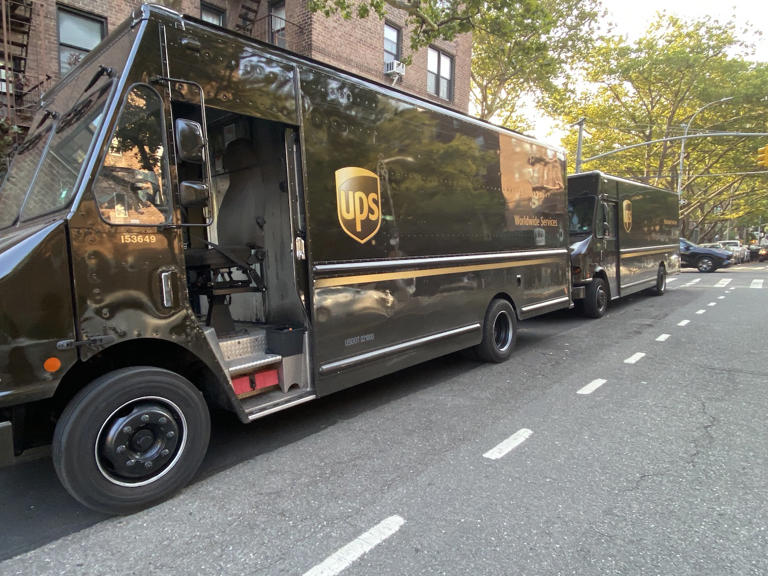UPS has announced its ambitious cost-cutting initiative, joining FedEx in striving to save $3 billion by the end of the 2028 fiscal year, with a primary focus on automation across its logistics network.
Under its “Network of the Future” plan, the parcel delivery company is consolidating approximately 200 facilities to streamline operations and increase efficiency. This consolidation aims to channel more volume into automated warehouses while reducing the number of sortation centers. Following the closure of 30 sorts last year, UPS plans to shutter another 40 in 2024.
Nando Cesarone, president of U.S. at UPS, emphasized that every work area is under scrutiny for automation opportunities, not just the sortation hubs. He cited examples such as address corrections, dispatch for package car drivers, feeder operations, and pre-load assist labels as areas slated for automation.
One notable automation project is the Smart Package, Smart Facility RFID package-tagging initiative implemented across company warehouses. According to Cesarone, this initiative has improved package flow per hour by 30 to 35 percent.
By the end of 2028, UPS aims to implement major automation projects at 63 sites and triple the number of buildings with automated technologies to 400 across the U.S. While ten automation projects are planned to be built from the ground up, the majority are expected to be integrated into existing buildings.
Cesarone highlighted the tangible savings resulting from building consolidations and automations, including reductions in feeder runs and the elimination of both a.m. and p.m. ground and air feeds in numerous locations.
However, the automation drive may lead to workforce reductions, as indicated by the 12,000 layoffs conducted by UPS at the beginning of 2024. Cesarone suggested that this initiative will significantly reduce the company’s dependency on labor. UPS anticipates realizing half of the $3 billion in savings by the close of 2026.
Bala Subramanian, UPS’s chief digital and technology officer, emphasized the company’s deployment of robotics to enhance productivity and efficiency in its logistics network. Robotics are being utilized to automate manual, small-parcel interactions and streamline processes such as filling, sealing, and labeling small-package consolidation containers at bagging positions.
In September, UPS unveiled a series of automation technologies aimed at enhancing efficiency across its operations. The company introduced pick-and-place technologies, powered by Dexterity, Fortna, and Plus One Robotics, to assist employees in sorting small packages. Additionally, UPS began utilizing unloading technologies from Pickle Robot to reduce the physical demands of trailer unloading.
To facilitate the movement of small packages and irregular-sized shipments within facilities, UPS deployed autonomous guided vehicles (AGVs) from Dane Technologies, Geek+, Locus Robotics, Crown Lift Trucks, and Toyota-Raymond. These AGVs enable workers to transport packages more safely and efficiently.
CEO Carol Tomé revealed that as of August 2023, 57 percent of UPS’ package volume flowed through automated hubs, up from 53 percent the previous year.
These initiatives are aligned with UPS’ broader objective of increasing revenue per piece (RPP) at a faster rate than cost per piece (CPP). Over the next three years, UPS aims to achieve a 2.5 percent annual increase in RPP while limiting CPP growth to 1 percent per year. The company has already seen improvements in pieces moved per hour, which rose from 64.8 per hour in 2022 to 67.6 per hour in 2023, resulting in savings of over 4 million hours.
UPS has also introduced its own efficiency metric, volume per resource, which currently stands at 51, representing average delivery volume divided by the company’s U.S.-based employees. By 2026, UPS aims to raise this metric to 59.
During the investor call, UPS outlined its financial targets for the 2026 fiscal year. The company expects consolidated revenue to range from approximately $108 billion to $114 billion, representing a compound annual growth rate (CAGR) of 5.9 percent to 7.8 percent above the $91 billion generated in 2023. Adjusted operating margin is projected to exceed 13 percent, up from 10.9 percent in 2023, while free cash flow is anticipated to reach between $17 billion and $18 billion, a significant increase from $5.3 billion.
Despite these ambitious targets, UPS stock experienced an 8.5 percent decline on Tuesday, indicating investor skepticism towards the company’s long-term prospects.
